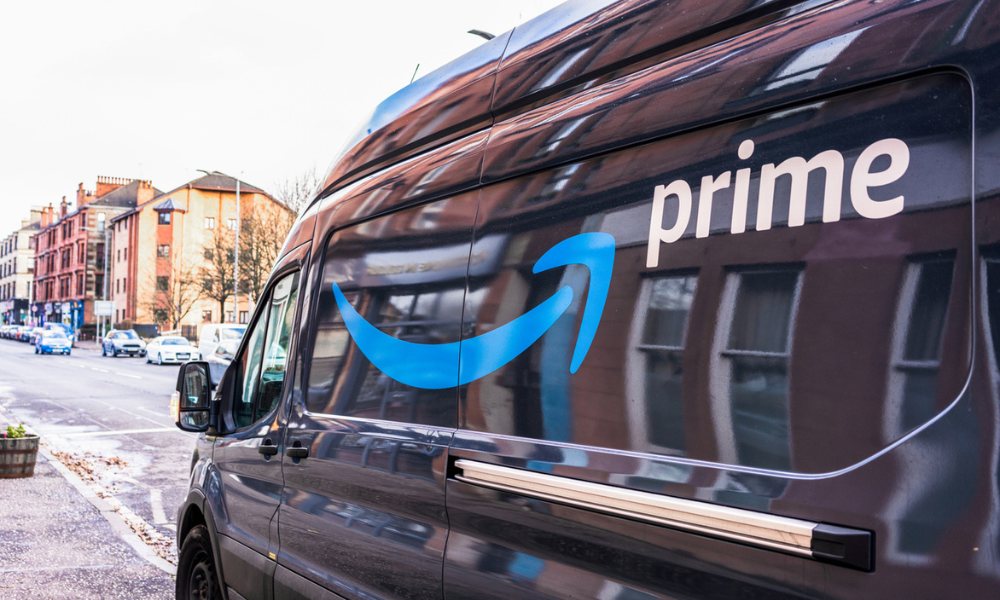ECA has been talking to the experts to find out.
Petru Metzger, Head of Payments, Endava:
“Amazon Prime Day is right around the corner and retailers will be looking at the event and how Amazon are able to enable the shopping journey for new and existing customers.
The industry has attracted huge investment and interest as consumers and businesses require faster, more reliable, and more secure ways of handling payments to ensure an easy, accessible, and stress-free experience when checking out, online or in-store. This is absolutely the case when it comes to these big shopping days, such as Amazon Prime Day.
This year will be especially interesting as many countries are facing a cost-of-living squeeze for consumers. As shoppers are having to be more careful with their disposable income we may see either a drop in sales or greater adoption of services such as Buy-Now-Pay-Later (BNPL) to help offset costs and avoid dipping into savings or turning to the high-interest rates of credit cards.
For retailers, embracing BNPL not only provides the benefit of potentially generating more sales but also means that they are able to gather even more and better data to help build customer loyalty and further improve the shopping experience, good news for both consumers and businesses.
As one of the first big shopping events prior to the Golden Quarter, Amazon Prime Day will be an interesting case study to gauge consumer behaviour both following the pandemic and also as macro-economic factors come into play”.
Katie Gilsenan, Trends Manager at GWI:
“Online retailers were clear winners during the pandemic, but with the cost of living ramping up, consumers are starting to re-prioritise what they need. GWI data suggests that the online shopping growth we’ve seen since the onset of the pandemic could be slowing down, with the number of consumers who say they’ve purchased a product/service online in the last week dropping by 10% since Q1 2021 in the UK. As inflation continues to bite, consumers have naturally become more laser-focused on value. So, when they do spend, they’re looking for the biggest bang for their buck.
It makes sense then why many consumers plan to snatch up some bargains on Amazon Prime Day. GWI data revealed that 44% of consumers across five markets say they plan to shop during the Prime Day event. Shoppers are especially keen to buy electronics and household products, likely taking the sales event as an opportunity to pick up items they’ve had their eye on for a while. Amid inflation and the cost of living rising, Amazon Prime Day will be a good measure for online retailers as a whole for how spending habits are changing in 2022 and what retailers can expect going into the Golden Quarter.”
Seb Reeve, Director of Product Management, Nuance:
“Amazon Prime Day provides us with a reminder of the opportunity for retailers to leverage the rapidly growing direct-to-consumer market (D2C). When brands make the pivot to D2C, many are focused on building their ecommerce site. But that’s only half the battle. To launch a successful D2C business and capture a meaningful market share, the overall customer experience is key.
People want their queries answered quickly, an easy way to manage their orders, and a brand that understands their needs and responds to them. 30% of consumers won’t return to a brand after one bad experience, rising to 70% after three bad experiences. In short, a “contact us” form that’s connected to a customer support email address just won’t cut it anymore.
However, there are tools available to help D2C brands rapidly build a retail offering. These include robust, customisable solutions that can work across every channel to provide tailored support that answers customer questions, helps them manage orders, and even anticipates their needs before they have to ask.
Technology such as AI allows retailers to scale their customer services, enabling communication across every type of channel, including voice, digital, and messaging – and providing the means to secure every interaction through sophisticated and seamless biometric authentication”.
Lawrence Roycroft, EMEA Sales Director, Blue Yonder:
“Initiatives such as Amazon Prime Day provide a unique opportunity to reward its Prime members for their loyalty while boosting sales. For retailers looking to run similar initiatives successfully, they must be able to deal with an influx in traffic and fluctuating inventory. To do this, they must ensure they’re making the most of AI and ML technology alongside an effective order management solution.
“Investing in this kind of technology can access and provide real-time insights to optimise the entire click-to-deliver journey. Through this, retailers can create customer-centric experiences that deliver the right product, through the right channel, with the speed and convenience customers expect. Not only does this help retailers effectively manage peaks and falls in demand, but order management technology can also help reduce operational costs across the supply chain, providing retailers with the opportunity to support their promotional activities.
“These technologies are imperative to help retailers to overcome obstacles and build a business for the future as we come to rely more heavily on online retailing.”
John Phillips, VP & GM EMEA, Zuora:
“Amazon Prime Day is a great example of a business anticipating customer needs and providing a service which offers real value to its subscriber base. The Prime Day offers are only available to customers who have committed to paying for their membership service via monthly or a one-off yearly payment. By offering rewards to its members, Amazon is able to attract new customers and build lasting relationships with its existing customers.
We’re living in economically challenging times; people are feeling the pinch and subscription services which don’t provide value are at risk of being cancelled. However, Amazon is showing that when you provide your customers with a valuable service and reward their loyalty, people are willing to keep paying for that service. In fact, recent data from the Subscribed Institute has revealed revenue per subscriber has increased, exceeding pre-pandemic levels by around 3x.
Businesses can look at the success of Amazon’s subscription model to see how to help maintain and grow these customer relationships. Along with rewards, the company offers flexible membership options, allowing customers to pause their memberships at no extra cost. By allowing customers to easily pause payments, businesses are able to reduce churn rates and keep hold of valuable customer data. This data enables businesses to learn from their customers and adjust their offerings to create a personal, tailored experience for when the customer restarts their subscription”.
Alper Turken, SVP Sales, EMEA and APAC Key Accounts, CommScope:
“Amazon Prime Day has fast become an annual sales holiday, where customers seek the best deals on the web – yet as an online-only retailer for most regions, it requires those customers to have access to speedy and reliable broadband and wireless connectivity.
Those who don’t have access to fibre broadband or 4G/5G networks may miss out on such buying opportunities, whether it’s from Amazon or from other digital-first retailers. “On the flip side, for retailers seeking to follow in Amazon’s footsteps, it is critical their operations are underpinned by robust enterprise networks – ensuring consistent capacity and speed of delivery of content. This will ensure customers from across the globe can visit their site through web and mobile apps without delays, as well as enabling retailers to automate follow-up processes with warehousing and distribution partners.”
Aaron Goldman, CMO, Mediaocean:
“Amazon Prime Day 2022 will be wildly unpredictable. While consumers are quite comfortable now with online shopping, the ongoing challenges with global health, supply chain, energy and critically, cost of living, will impact buying decisions.Amazon Prime Day is built around rewarding shoppers for their loyalty throughout the year. Like other key retail moments across the globe, including Singles Day or Black Friday, it’s an opportunity for brands to entice new and existing customers with special deals.
For retailers and advertisers to capture the mood of moment and generate sales they need to be agile with planning and execution. One way to do this is by using AI systems to automate the personalisation of creative based on product inventory, pricing, and other dynamic factors.
Brands must also consider that while conversions happen on Amazon they are driven by many media channels. As always, an omnichannel and omniformat approach that includes video advertising will maximise outcomes for Prime Day and beyond.”









